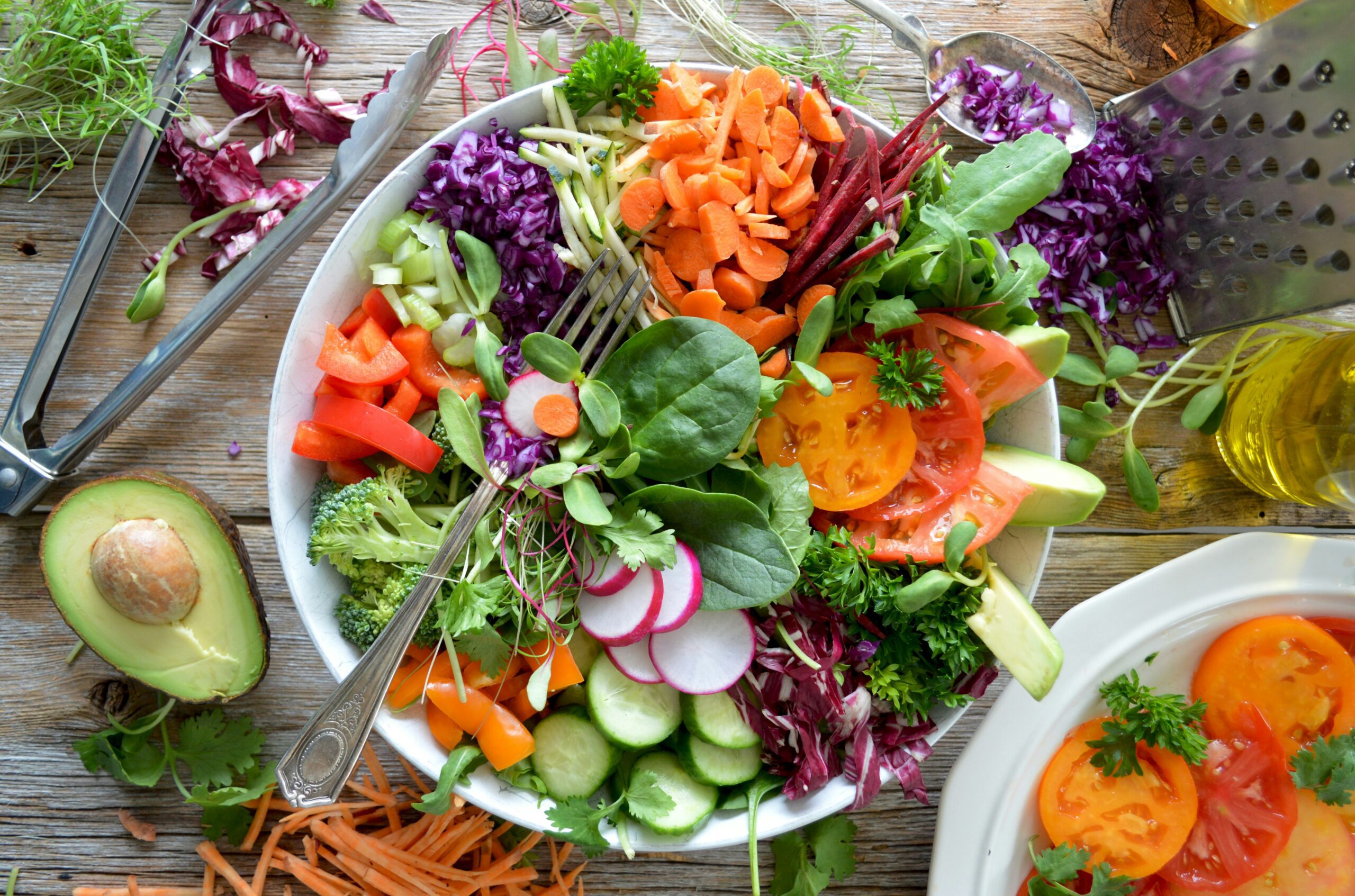I didn’t really have much of a plan to give up or change anything this Lenten season until about 12 hours prior to Ash Wednesday, when my husband decided he wanted to give up meat, sugar, and alcohol for Lent.
At first, I was sure what he meant was, let’s give up sugar and alcohol and just add a couple more vegetarian-type meals during Lent. We already don’t eat beef, and only occasionally eat pork, but chicken? Turkey? What will I make if it doesn’t have meat in it?!
But then we watched You Are What You Eat: A Twin Experiment on Netflix, and at least for this Lenten season, we’re both convinced and on board with trying out a meat-free diet.
According to a 2017 LifeWay poll, about a quarter of Americans observe Lent (61% of Catholics, 20% of Protestants). Lent is a season of reflection, repentance, and simplifying one’s life to make room to sense more of God’s loving presence. Whatever we do, whether eating or drinking—or not eating or drinking—the whole point is to do so mindfully and with the intention of seeking more of the Lord instead of more from this world.
Eating a more sustainable diet during Lent is infused with purpose and intentionality that flavors your feast with the fruits of the Spirit. But, frankly, it can be overwhelming to make these changes to your diet.
We’re now several weeks into Lent, and I’ve learned a thing or two about choosing into a plant-based diet. Here are some things I’m doing and trying to keep in mind as we continue through Lent.
Variety Is the Spice of Life
There’s a whole internet out there, filled with plant-based recipes to try. Some sites offer downloadable grocery lists and vegetarian protein sources for the plant-based life, which I like to use to stimulate my creativity. When was the last time you cooked with kale? Have you made ratatouille lately? What about throwing some raspberries, nuts, and seeds in with your oatmeal tomorrow morning? Have you always only steamed your broccoli? Try something new!
I’m using this season to be a little more adventurous with my palate and my spice rack. Many different ethnic foods are plant-based by design, so look up some curries and rice bowls, falafel and fattoush salads, hummus and vegetables, baked potato bars, lentil and vegetable soups, and pasta platters to bring new and delectable dishes to your family’s table.
I use a great little app, called AnyList, to plan out meals, import recipes, build my grocery list, and order my ingredients through Instacart. I highly recommend it!
Here’s a little snapshot of what our meals have looked like the last few weeks, if you’re looking for some ideas (all of these are recipes I found on Pinterest):
- Vegetarian fajitas
- Lemon garlic parmesan shrimp pasta
- Ramen bowl
- Tacos (with black beans and refried beans)
- Falafel and Fattoush
- Thai curry
- Burrito bowls with cilantro lime rice, guacamole, corn salsa, and black beans
- Baked potato bar
- Egg roll in a bowl (vegan) and veggie fried rice
- Lentil soup and naan
- Vegetarian chili and cornbread
Eating whole food, plant-based meals will also cut down on the amount of processed foods you’re consuming, which is better for your body and also reduces packaging waste. Our bodies are temples of the Holy Spirit, you know, so it’s probably not the worst idea in the world to put good things into that temple (1 Cor. 6:19-20).
For more inspiration, follow @jenneatsgoood on Instagram! She offers lots of tips for sustainable meal planning on a budget.
Team Up with Friends
You can make dinner a communion feast with a few friends around your table. Plant-based meals, like Mexican bowls, baked potato bars, Chinese dishes, or curries are a great potluck-style carry-in meal for a night with friends. Challenge each other to prepare a different kind of curry, or invite each other to bring a different side or topping—the addition of this plant-based night with friends is an opportunity to experience the joy of God’s presence among you.
Plan Your Meals and Make a List
I mentioned above the app, AnyList, which has really revolutionized meal planning for me. Every week, usually on Sunday, I spend an hour or so selecting the meals I want to make for the upcoming week, taking into consideration the busyness of our schedules and how much time various meals will take to cook, and then I order as many of the items as I can through Instacart (I’m a huge Aldi fan), picking up the remaining specialty items at our local grocery store.
Meal planning and prep saves us lots of time and money—I’m far less likely to try to order out or go out if I have a plan already for what we’re making for dinner. And, like so many of these tips, it’s healthier for us too.
Forget Clean Your Plate and Instead Eat Your Leftovers
Don’t rely so much on the old “clean your plate” mantra; instead, put more emphasis on eating your leftovers.
Our God is a God of abundance. After all, he multiplied the fish and loaves of bread and left 12 basketfuls of leftovers. He doesn’t intend for any of that to go to waste, so let’s share the leftovers with a neighbor in need, eat them for lunch the next day, freeze what can be kept for a busy night ahead, and compost the rest.
Purchase Sustainable Seafood
If you’re going for more of a pescatarian diet, try to enrich your diet with local and sustainably caught seafood. You can buy shares of fresh, locally sourced seafood for regular delivery through a community-supported fishery. LocalCatch.org’s directory of local fisheries “aims to support social, ecological, and economic sustainability by way of local and direct seafood marketing in North America.”
Investigate Local and Seasonal Produce Options
Buying local and seasonal produce is not just good for your body (food grown in season is often more tasty and nutritionally dense), it’s also good for the environment. Locally sourced food doesn’t have to travel as far, reducing pollution from shipping and trucking.
The Seasonal Food Guide allows you to quickly discover what produce is in season near you. Search by state, month, and type of produce!
I had no idea, for instance, that horseradish, mushrooms, rapini, and sprouts are grown and harvested in late February in Ohio. Also, I’ve never made rapini. Maybe it’s time to try some rapini!
Drink More Water and Less Carbonated Beverages
The manufacturing process that goes into carbonated beverages requires a significant amount of water, raw material extraction (like sugar and flavorings) through agricultural practices that contribute to deforestation and habitat destruction, energy consumption, packaging, transportation, waste generation, and carbon emissions.
Not to mention that all of those sugary carbonated beverages aren’t great for your health goals.
As part of your Lenten practice, consider drinking more water and less beverages that have to go through such a resource-heavy production process.
They say that it takes about 66 days to form new habits. Maybe this intentional effort to refine our diets during these forty or so days of Lent will lead to better dietary practices that benefit both our bodies and our planet!





 Copyright
2025
Root and Vine
Copyright
2025
Root and Vine